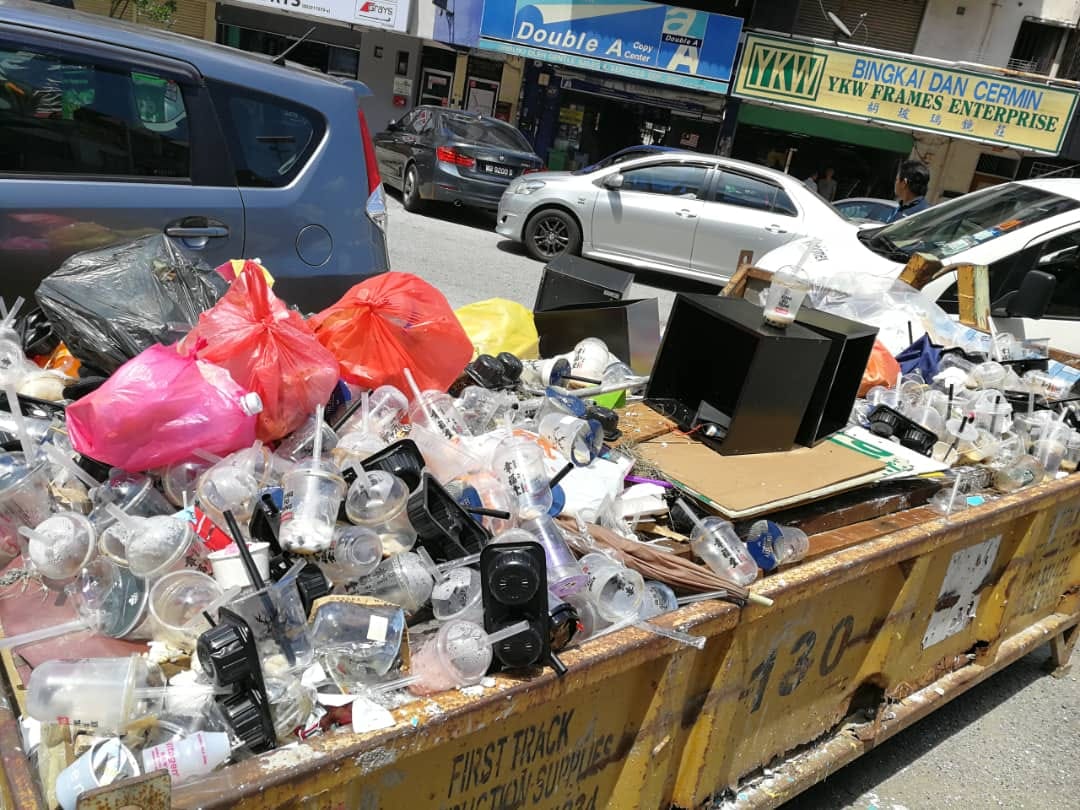Imagine getting a cup of bubble tea, maybe even from the ever-so-delicious Hello Jasmine bubble tea shop. You’re only one customer, but just think about how much plastic waste results from that 1 cup of tea…
The plastic straw, you definitely can’t even recycle that. TRASH!
The plastic film that you stick your straw in? TRASH!

The plastic cup that holds the milk tea? Possibly recyclable, depending on the type of plastic, but more often than not, you’d probably end up tossing the empty cup in the trash can due to the lack of recycling bins in shops and around streets. TRASH YET AGAIN!
Wait…so basically you just threw away the entire cup and straw that it came in. Nothing was recycled. Now imagine the amount of waste resulting from millions of people drinking bubble tea, which is only going to increase as boba’s popularity continues to grow. That’s a whole lot of waste created by drinking bubble tea!
As an avid boba lover, this realization is extremely saddening. I love my boba and this means every time I’m getting a cup of bubble tea, I’m also dumping more waste, capable of polluting nature and harming both marine and terrestrial animals. So, how can bubble tea addicts avoid the guilt of polluting the environment while enjoying this delectable drink?
Straws
Although there’s a recently been lot of talk about using reusable straws and banning plastic ones, they account for only a minuscule percentage of plastic waste in comparison to other plastics. However, drinking bubble tea requires the use of thick straws to suck up boba. Using thick straws is pretty much a necessity: without them, you just CAN’T easily consume boba. But disposable plastic straws usually aren’t biodegradable. So what are some alternatives?
Paper

A biodegradable and disposable alternative would be to use straws made out of paper. They are possibly okay for other drinks, but only if you don’t mind the papery taste (I do though…it just doesn’t taste good!). For boba, it’s especially brutal. Remember, you’re sucking little squishy boba balls through the straw, and it gots soft and soggy. Personally, when I used a paper straw in Taiwan this past summer, it really took away from both the taste of my milk tea and it difficult to suck up the boba. Not a fun experience.
Metal

I am a proud owner of 3 metals straws: 2 regular thin ones (one straight and one bent) and 1 thick one, suitable for boba. Depending on the quality, you shouldn’t typically be able to taste the metal of the straw (if it is made of stainless steel), which is a huge plus when compared to paper. It tends to be a little more difficult sucking boba up, but is it not a big problem once you’re used to using the straw. The main problem with my straw is the difficulty stabbing them in the plastic film coverings that most boba places use because it doesn’t have a pointed end. I might get large holes and spills from stabbing the straw. Otherwise, metal boba straws serve its purpose well.
Note: If you want to buy any type of reusable straws, be sure to buy one with a POINTED END. Trust me, it is so stressful as you stab a flat straw into the plastic film, fearing a bubble tea explosion.
Glass

Although I don’t have a glass straw, one of my friends does. For the most part, it has the same positives and negatives as metal straws. Although, one pro is that you definitely won’t get any weird paper or metallic tastes. Another added bonus is that you can see the oddly satisfying process of boba getting sucked up as you drink, as you can with disposable plastic straws. However, glass is obviously also easier to break, so handle with care when cleaning or using it!
Others
Other less common alternatives include bamboo (one-time use and reusable), silicon (reusable and chewable), and reusable plastic straws.
Cups
Using eco-friendly cups and lids (like glass) can depend on the bubble tea stores themselves. However, there are still

some steps you can take to ensure your bubble teas are as eco-friendly as possible.
Recycle at Home
Rather than throwing away your cups after finishing your bubble tea, keep it and take it home with you to recycle. Even if the lids and cups are recyclable, most bubble tea stores only have one place to dispose of used cups and straws: the trash can. Taking empty cups home ensures that at least the cup can be recycled instead of filling landfills.
Bring Your Own Container
Another method to reduce waste from bubble tea is to simply bring your own boba friendly reusable containers: mason jars, tumblers, etc.. This strategy is actually fairly common in some places, like some California and Canadian bubble tea shops. Sometimes, bubble tea stores might even offer a small discount if you bring your own container. Although this isn’t common in Chicagoland area bubble tea places, there’s always no harm in asking boba places if they will let you use your reusable container instead of using plastic cups!
‘FLOAT’
An innovative non-straw reusable glass cup for bubble tea, currently being developed by Mikey Wu and Fang Shih. It completely cuts out using straws by using an inner chamber for boba and ice and an outer chamber to hold the milk tea, with a hole just slightly bigger than boba to drink from. The size of the hole keeps you from getting too much boba at once and also eliminates the need to use a straw. A bold take on the boba experience for sure, but definitely more eco-friendly! I’m excited to see how the design turns out!
How will you drink bubble tea sustainably?
ʕ•ᴥ•ʔ

